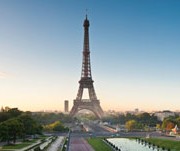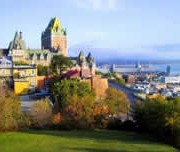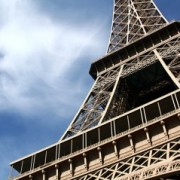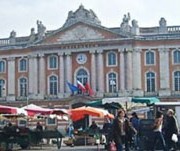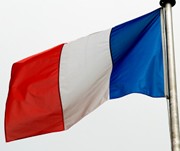Top 5 French course destinations this spring
Cactus offers locations within France and Canada where you can take a French course, but these are our pick of the top five for springtime study.
1. Paris
As one of the world’s most iconic cities, Paris is a hugely popular tourist destination. Unfortunately, as is the case with any such city, the prices reflect its popularity and throughout the summer they are especially high. Spending time in Paris during the spring is therefore a much better idea – the weather will be warm, the trees and parks will be nice and green, there’ll be far fewer crowds and best of all, you won’t have to pay through the nose. A light spring evening, a large glass of wine and a prime people-watching spot on a café terrace…what more could you want at the end of a day of French lessons?
More on French courses in Paris
2. Annecy

Annecy has got to be one of France’s most picturesque towns, with its turquoise lake and stunning mountain backdrop. In the summer Annecy attracts thousands of visitors who come to swim in the lake or hike in the surrounding countryside, and in the winter it’s a great base for skiers and snowboarders, so the spring is one of the less busy (and therefore less expensive) times of year. By April most of the low lying snow will have melted, making hiking and biking possible, but anyone who fancies spending a day or two on the slopes might be lucky and still get a few days in higher up in the mountains.
More on French courses in Annecy
3. Tours

A beautiful city located in the heart of France’s chateaux-filled Loire Valley, Tours is known as the “garden of France”. Despite its attractive surroundings, the title actually comes from the large number of parks in the city, and what better place to watch the seasons change and the green return than here? Outside of lessons you’ll be able to experience all that this historic city has to offer, and visit the pretty surrounding area with its fairytale castles and endless vineyards.
More on French courses in Tours
4. Nice

Located on France’s up-market Riviera, Nice has long been a favourite with holidaymakers from all over Europe. Its unique blue waters and lovely climate make it a great place to relax and un-wind, but often there are lots of other people with the same idea! To enjoy the weather and surroundings without the crowds, the best time to go is probably April or May, when you get the best of both worlds. If you take a course a French course in May, you’ll be able to enjoy ‘La Fête de Mai’, which takes place every Sunday in the month and includes a series of free events, and refreshments featuring locally produced food.
More on French courses in Nice
5. Bordeaux

It’s great to visit Bordeaux in the spring time. The vineyards surrounding the city are full of colour, the weather is pleasant and as it’s still within term time, you’ll get a really authentic experience of life in this lively university city. You’ll also get chance to explore all the usual tourist sites, but without the crowds and the queues, and you’ll probably also benefit from cheaper air or rail fares when you book your travel there and back. Events taking place in the city include the Escale du Livre, a well-known book fair that is held around the Place Renaudel in March, and the Bordeaux Spring Fair which is held from late April to early May on central Place de Quinconces – in close proximity to both of our French schools in Bordeaux.
More on French courses in Bordeaux
Please visit the Cactus Language website for full listings of French courses and to book.

